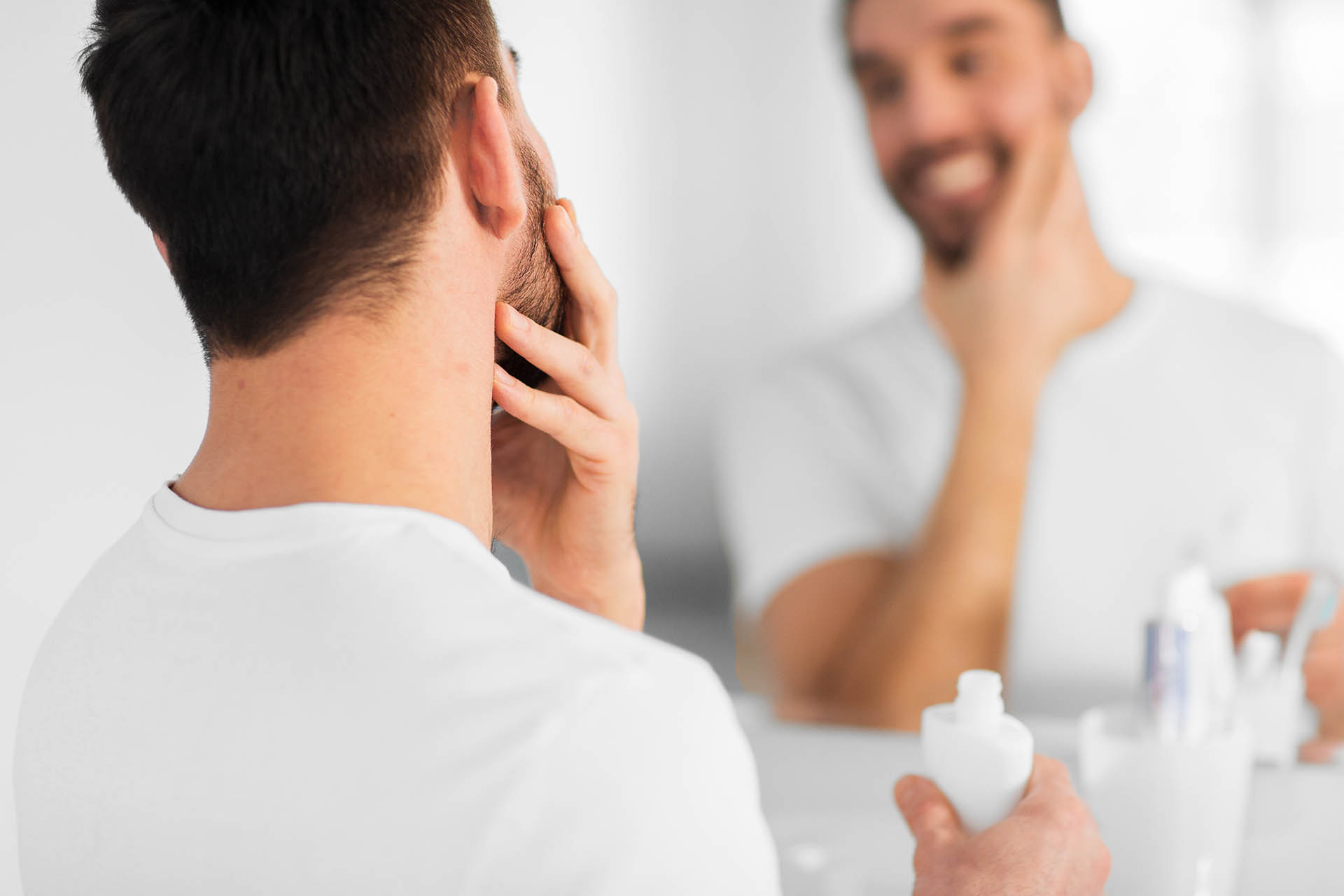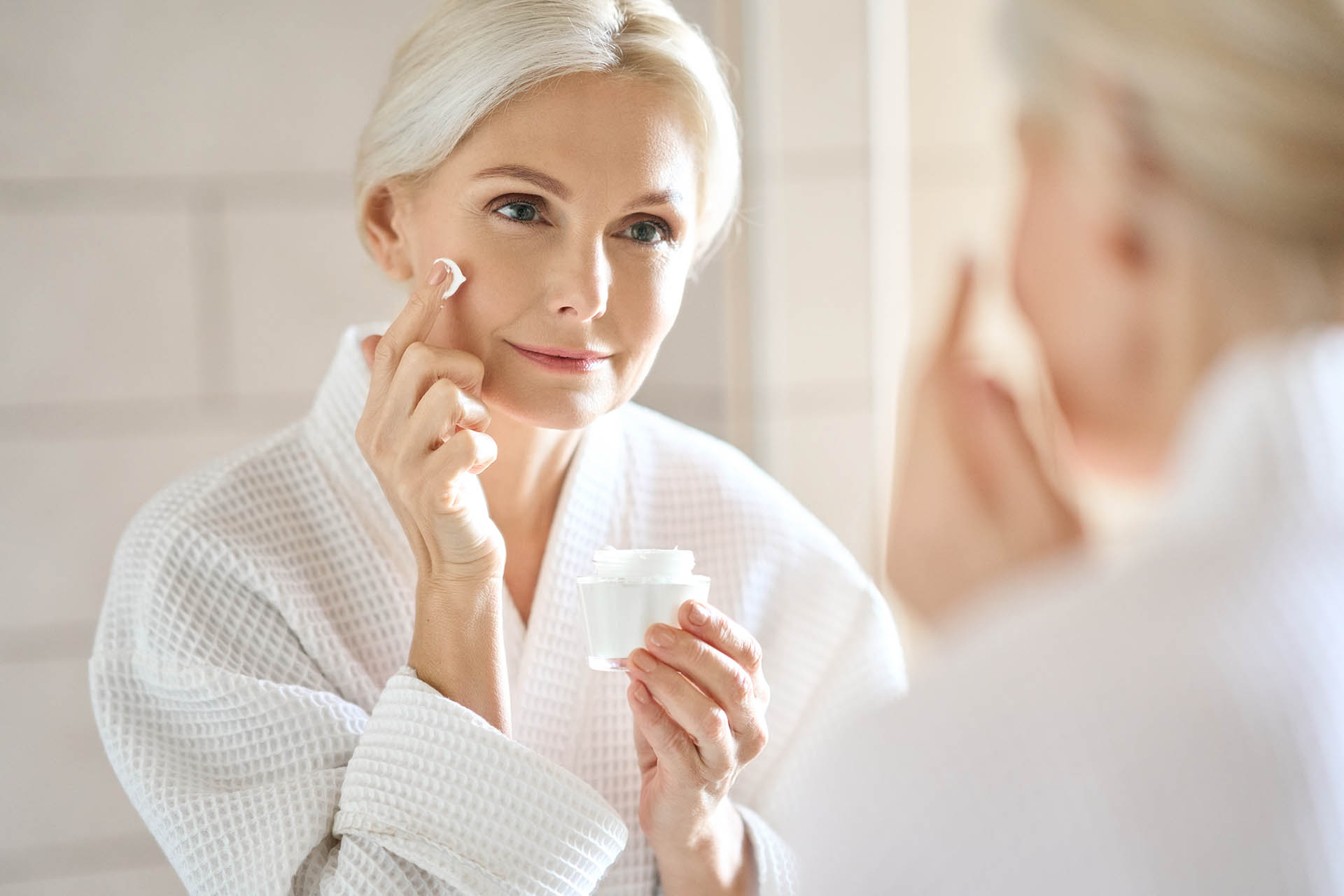Let’s face it, the majority of skincare products and marketing seems to be targeted towards women. Leaving men a bit neglected. With women accounting for more than 90% of spending on skincare, it’s understandable. However, this doesn’t mean that men shouldn’t be paying attention to their skin and what products they use (if any!), or that male skin needs less attention than female skin. It can be intimidating knowing where to start, so here’s a guide.
Skin care for Men
Do men and women have different skin care needs?
Yes, and no. Male skin is different from female skin. It’s about 25% thicker, produces more oil, has larger pores and more hair follicles with coarser hair, and is subject to different hormonal influences. This means male skin may be more suited to products designed for oilier complexions, such as lightweight gels and lotions rather than thicker creams and balms. In addition, ingredients to control oil production and reduce pore size such as retinoids, niacinamide and salicylic acid are often helpful. However, you don’t need to look for products specifically formulated for men – most unisex products, and even products designed for women, are suitable for use on male skin.
Despite these differences, there are many similarities between male and female skin – skin is skin, after all! Basic skin care principles apply to all of us. It’s recommended that everyone wears sunscreen daily and uses a gentle cleanser. When targeting skin concerns such as ageing, pigmentation, and acne, the advice is the same, regardless of gender.
What’s the difference between products marketed for men and women?
Some of the major differences between products marketed for men and women are simply packaging, fragrance and branding. Products designed for women tend to have more floral, traditionally feminine fragrances, names and packaging, whilst these are more stereotypically masculine in products designed for men.
When it comes down to the actual formulations and ingredients, often the differences are much less obvious, if indeed present at all. Given that men tend to have more oily skin, products designed for men may be lighter and more quickly-absorbing than products for women. As the skincare market for women is so much larger, often there are multiple products targeting many different skin concerns for women, while there is a more limited range for men.
In short, products which are gender-neutral, or designed specifically for men or women, fundamentally aren’t that different. Often it’s a marketing ploy more than anything else!
I don’t want to use lots of different products on my skin. Where’s a good place to start?
A good place to start is with a gentle, fragrance-free cleanser used twice daily, a 50+ sunscreen applied each morning, and moisturiser if your skin feels dry. If you do that, you’re ahead of many blokes. You really don’t need to spend a lot of money on the basics, and you can pick up a great cleanser, sunscreen and moisturiser from any chemist for less than $20.
If you’d like to ramp things up a notch, depending on your skin concerns, you could consider taking these extra steps: add a topical retinoid at night for anti-ageing; a vitamin C product in the morning to protect the skin from environmental damage and to reduce pigmentation; and/or niacinamide once or twice daily, for a multitude of benefits including anti-ageing, antioxidant, and anti-inflammatory effects.
Where do men go wrong with skincare?
Some men don’t go wrong at all, and have their skincare down pat! However, some men neglect skincare completely. Even if you’re happy with your skin as it is, using sunscreen daily is a must for everyone, as it reduces your risk of sun damage and skin cancer. Many men use a body wash or soap to wash the face along with very hot water, all of which can contribute to dryness, impairment of the skin barrier and irritant contact dermatitis. It’s far better to use a gentle, fragrance-free cleanser and lukewarm water, as well as a light moisturiser to combat dryness, if needed.
I get shaving bumps on my face. What can I do about them?
Shaving bumps are very common, and occur when the hairs grow inwards, rather than outwards, causing red bumps on the skin. Here are some simple steps to help prevent this from happening:
- Use lukewarm rather than hot water
- Shave in the direction of hair growth
- Use a razor with 1 or 2 blades only
- Use a clean razor and replace the blade regularly
- Shave less frequently if possible, for example every two to three days
- Consider clippers rather than shaving, as they don’t cut the hair as close to the skin as a razor, reducing the risk of hairs ingrowing
- Moisturise regularly with a light moisturising lotion
- Consider using a cleanser or moisturiser containing glycolic acid, lactic acid or salicylic acid to help reduce the build up of dead skin cells, which can lead to ingrown hairs
- Benzoyl peroxide can be used as a spot treatment




